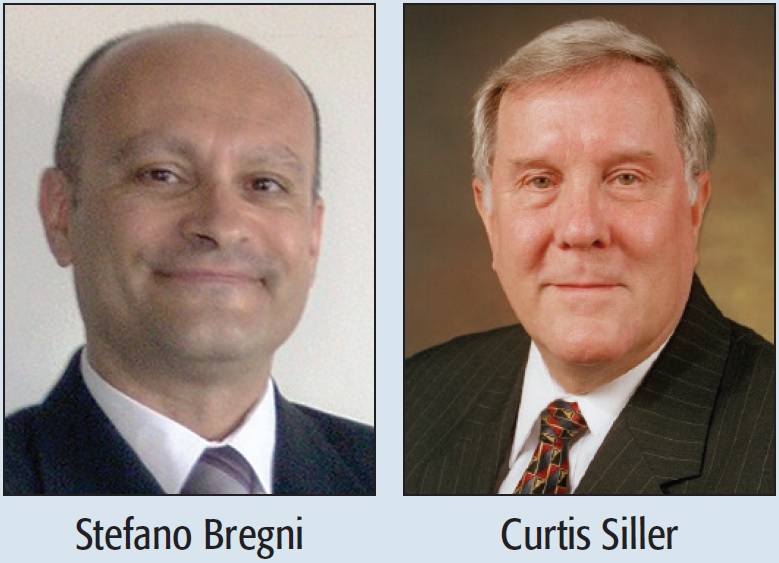
Following the series of articles published about two years ago during my previous term as Vice-President for Member Relations, with this issue we begin a new series of eight interviews with the Directors of the IEEE ComSoc Member and Global Activities Council, which will be published every month in the Global Communications Newsletter.
In this series of articles, I will introduce the six Directors on the Member and Global Activities Council (namely: Sister and Related Societies; Membership Services; AP, NA, LA, EMEA Regions), and the Chairs of the Women in Communications Engineering (WICE) and Young Professionals (YP) Standing Committees. They will present their sector activities and plans.
Opening the series, this month we begin with Curtis Siller, Director of Sister and Related Societies. Curtis has served on the IEEE Communications Society Board of Governors for 18 years. Among his service to our society, he was President (2004–2005), a Director for three terms and a Vice-President for two terms. He was an IEEE Division Director and Editor-in-Chief of IEEE Communications Magazine in 1993- 1995. Curtis is an IEEE Life Fellow. He worked for more than 30 years at Bell Labs (where he was named a Bell Labs Fellow), then later in several other high-tech and consulting companies.
Bregni: Curtis, let us begin by explaining what are the Sister and Related Societies of ComSoc.
Siller: The IEEE Communications Society has a long tradition of global outreach. Dating back more than 20 years, ComSoc instituted a novel program of entering into relationships with Sister and Related Societies. Sister Societies are those that have a charter that overlaps ComSoc’s technical scope. These are usually national professional societies. Related Societies are those whose focus complements but does not overlap ComSoc’s technical orientation.
Bregni: Are Sister and Related Societies important elements in ComSoc’s strategy toward globalization?
Siller: They certainly are! Both are important ingredients in ComSoc’s international initiative. Allow me a moment to share a few benchmarks. As a robust Society, ComSoc is among IEEE’s most prominent Organizational Units, with a membership that exceeds thousands and is experiencing membership growth. Notably, 2004 was a very significant year. It was then that our Society transitioned to having more international members than those in the United States. Today, less than half of our membership is in the United States. More are international, with especially significant growth in Asia and Southeast Asia. By way of contrast, IEEE, our parent organization, attained a majority of international membership in late 2011/early 2012, nearly eight years later.
Bregni: To how many Sister Societies worldwide is ComSoc linked?
Siller: A full list of Sister and Related Societies is found at www.comsoc.org/about/sistersocieties
There you will find that ComSoc has reached out to more than 30 Sister Societies worldwide and a variety of Related Societies. Each of those societies adds to our global community! In early 1995, six societies entered into these agreements. Since then, the number has grown several times, as noted above.
Bregni: How does ComSoc reach out to Sister and Related Societies? Are our relationships regulated in some way? And what types of activities are mainly addressed by cooperation?
Siller: There are at least two essential elements that bind us to these societies: conferences and publications. We’ll share more about that in a moment. The bases for these relationships are two Memoranda of Understanding (MOUs). Generally, these span two to four years, with the ComSoc President and a corresponding Sister or Related Society president as signatories. Essential ingredients include: submission of papers to ComSoc conferences, journals, transactions, and magazines; discounted participation at our conferences; discounted subscriptions to ComSoc publications; affiliate memberships in ComSoc; streamlined technical co-sponsorship of conferences; participation in ComSoc technical committees; and advertising promotions.
Bregni: Tell us something more about Related Societies.
Siller: In addition to Sister Society agreements, ComSoc enjoys Related Society agreements. These naturally include operational units within IEEE, such as the Signal Processing, Computer, Circuits and Systems, and Power and Energy Societies. Among those outside of the IEEE, let me note the East-West Institute, a “think tank” in New York City that is dedicated to facilitating world harmony, and the Pacific Telecommunications Council.
Bregni: In conclusion, would you share with us your plans going forward as Director of Sister and Related Societies?
Siller: The opportunities are numerous. MOUs that are expiring need to be renewed, and additional societies, not yet among those noted above, need to be identified. Additionally, elements will be added to these agreements to make them more meaningful to the Sister and Related Societies and for ComSoc. Further, in the past I think there has been little direct, personal contact between ComSoc members and individuals in our reciprocal organizations. One way to enhance these contacts is to offer social events at ComSoc’s most notable international conference and meeting venues so we can greet each other on a personal level and discuss ideas that would bond us more fully.
ComSoc celebrates all of these relationships. They are essential to our presence in the world community. Please contact me if you know of other societies that might invite our engagement.